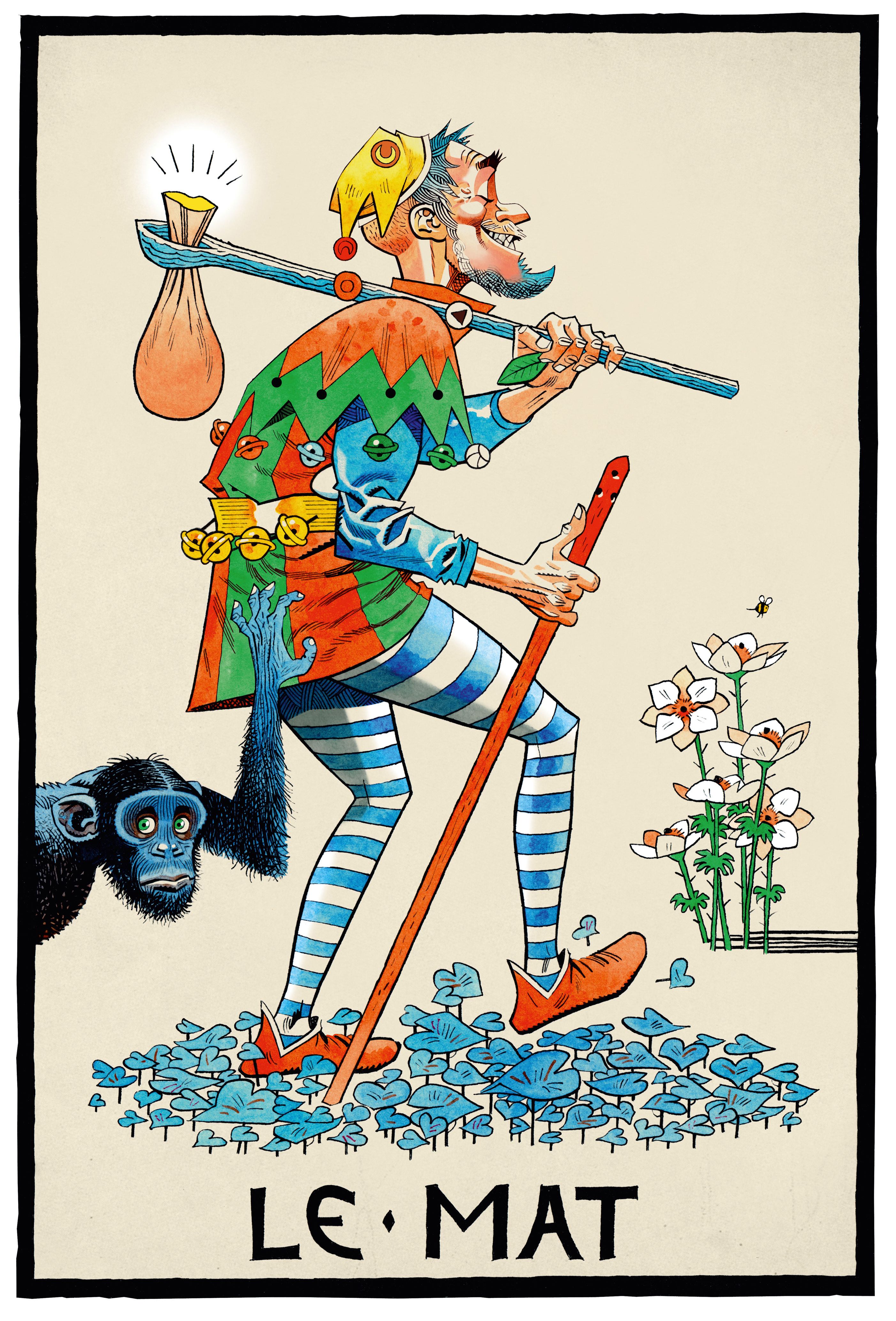Exploring the weird, wonderful worlds of Jamie Hewlett
- Text by Biju Belinky
- Illustrations by Jamie Hewlett

It doesn’t matter where you come from or how you first saw it – anyone can recognise Jamie Hewlett’s work from a distance. Juxtaposing hyper-detailed scenes with hollow-eyed, intricately dressed characters, the artist’s brain contains a multitude of universes that defy classification, teetering the line between comic books, fine art and performance.
Although Hewlett’s legacy has been widespread, be it via Gorillaz records, Saatchi exhibitions or Tank Girl comics, it has never been comprehensively catalogued – until now. Jamie Hewlett, published by Taschen, contains 25 years of the artists’ work, containing everything from finalised pieces, to drafts and projects that never saw the light of day.


The book opens with a candid conversation between Hewlett, the renowned French photographer Jean-Baptiste Mondino and the actress Emma de Caunes, who also happens to be Hewlett’s wife. They discuss longevity, big and small dicks, punk rockers, DC comics, and MAD Magazine.
The casual approach to the conversation is fitting with the rest of the book – it’s haphazard, not overly precious or hyper-complex, but filled with happiness and detail. Halfway through, talking about his characters, Hewlett says: “I like misfits. I like ugly people who are interesting. Ugly-looking people who dress well are more interesting to me.”
And it shows. The women he creates steer away from the hyper-femininity and traditional – instead, they exist in their own right. They are not solely decorative. Tank Girl, for example, was born in the creative unconscious of Jamie and Alan Martin during the Thatcher years, and came into the art world like a punch in the face. Gleefully bruised and battered, she drank, fucked, and ran through the Australian desert with her kangaroo boyfriend, Booga. The pages transported the reader into the mind of tank girl, who became an icon for misfit women all over the world.


The book goes on to explore his other successful projects from the past 25 years. There’s Gorillaz, the only entirely manufactured band during the age of fake-reality popstars; heartfelt documentations like the Bangladesh series; and his latest projects, like giant tarot cards The Suggestionists, shown at the Saatchi in late 2015.
Ultimately what is incredible about Hewlett’s work is that it continuously defies definition and continues to expand itself without losing character. It’s clearly identifiable even when it changes medium. It borrows from all aesthetics and DIY cultures and creates something brand new – a dirty, gritty world of wires, cock shuttle ships, giant eyes and red-eyed beasts that a lot of us would love to live in.

 Jamie Hewlett is out now, both living his life and in book form, via Taschen.
Jamie Hewlett is out now, both living his life and in book form, via Taschen.
Enjoyed this article? Like Huck on Facebook or follow us on Twitter.
You might like

The Getty Center’s first exclusively queer exhibition opens today
$3 Bill: Evidence of Queer Lives — Running until September, it features paintings, ephemera, video and photography to highlight LGBTQ+ histories, culture and people from 1900 to the present day.
Written by: Isaac Muk

Yaya Bey: “Capitalism is exploitation, period”
do it afraid — Ahead of the release of her second 18-track odyssey in just over a single year, we caught up with the prolific singer, discussing the pitfalls of the music industry, European ‘voyeurism’ framing her previous album and breaking narratives set upon her by others.
Written by: Isaac Muk

Nina Utashiro builds disquieting, macabre sonic worlds
Huck x Eastern Margins — We caught up with the Japanese-German rap experimentalist ahead of her performance at Huck’s SXSW London joint event with Eastern Margins.
Written by: Isaac Muk

Huck teams up with Eastern Margins for a special SXSW London showcase
From Shibuya to Shoreditch — Taking place at Village Underground on Monday, performances will come from MONO, Nina Utashiro, Ena Mori, Jianbo, LVRA & Soda Plains.
Written by: Isaac Muk

Analogue Appreciation: Shura
I Got Too Sad For My Friends — In an ever more digital, online world, we ask our favourite artists about their most cherished pieces of physical culture. Today, it’s English singer-songwriter Shura.
Written by: Shura

After Assad’s fall, Syria’s musicians rebuild from the rubble
Spaces Between the Beats — Following decades of dictatorship and 14 years of civil war, the country’s classical and creative scenes have an opportunity to build from scratch. Andrei Popviciu speaks to the people hoping for a flourishing new era of art and sound.
Written by: Andrei Popoviciu

